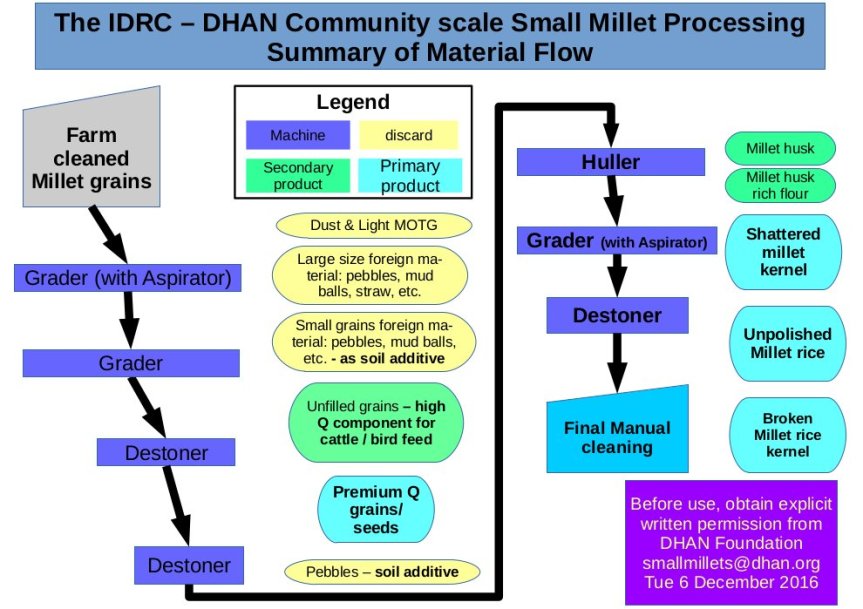In this session, we shall go over some of the simple ways to identify the quality of different staple forms of millets and also share some simple and effective ways to assuage consumer's concerns regarding the price of millet based products.
Tag: millet processing
Know Millets Webinars 2020, Session # 08
Machines to process husked millets into edible forms are available. In this session we shall try to communicate the basic steps in mechanized processing of millet grains and some pointers to help individuals and organizations make better informed decisions when looking to set up mechanized millet processing units.
Know Millets Webinars 2020, Session # 01
In this webinar, we shall see how a community centric focus follows from a shorter and tighter supply chain that would be necessary to derive the nutritional benefits that millets offer.
An audio visual guide to Community Scale Small Millet Processing
https://www.youtube.com/playlist?list=PLw4jroI0AKyC9avNj1fLKQc78UWAr8sVj Here are a series of short clips giving a brief overview of community scale small millet processing. This was put together in 2016 for the DHAN Foundation and the Small Millets Foundation with support from IDRC, Canada.
Why is the bran so rich in nutrients?
The grains that we grow, harvest and eat as cereals are produced by the plants as their next generation. Observing the cereal grains from this perspective helps us better understand and appreciate the structure and nutritional composition in the grains. As mentioned in the earlier posting discussing the structure of a husked millet grain, the … Continue reading Why is the bran so rich in nutrients?
Dehusking small millets – its what we retain that matters
Cereal grains that we eat in the form of rice have a husk that we cannot digest. We need to remove this outer most layer to bring it to a form where as much of the nutrition in the grain is made accessible to our bodies. This process of removing the husk is called dehusking, … Continue reading Dehusking small millets – its what we retain that matters
Grading in community scale small millet processing
Millets are cultivated predominantly as rain fed crops. They are known to be fairly hardy and can survive long dry spells and fare reasonably well even when there is too much rain. Their hardiness allows for farmers to cultivate these crops with minimum inputs and efforts. Small millet crops do not require the field to … Continue reading Grading in community scale small millet processing
Steps in small millet processing
Like any grain processing, small millet processing involves three primary tasks: Size Grading Density Grading Hulling (also referred to as dehusking) An eccentric or vibrating grader is used to achieve size grading, a destoner is used for density grading and an impact or shear huller is used for hulling. Most people talking about millet processing invariably focus … Continue reading Steps in small millet processing
All seeds are grains, but every grain does not make a seed!
As we approach the time to gather seeds for the upcoming season …
There is an old wisdom shared in almost all languages of the subcontinent – that all seeds are grains but not all grains can qualify to be used as seeds. Recently grains of 6 different millet varieties were processed at the Earth360 facility in Kadiri, A.P.. While part of the size based selection is done using a grader, the larger & heavier grains (the images in the left hand side column) are selected for seeds using multiple passes in a destoner. The remaining material (the images in the right hand side column) shall be collected and used for other purposes, including for processing to human edible forms.
Parameters to compare different millet grain hulling machines
12 questions / parameters to ask the machine supplier before deciding on a millet hulling machine (org pub. 2016/09/28 on personal blog)



